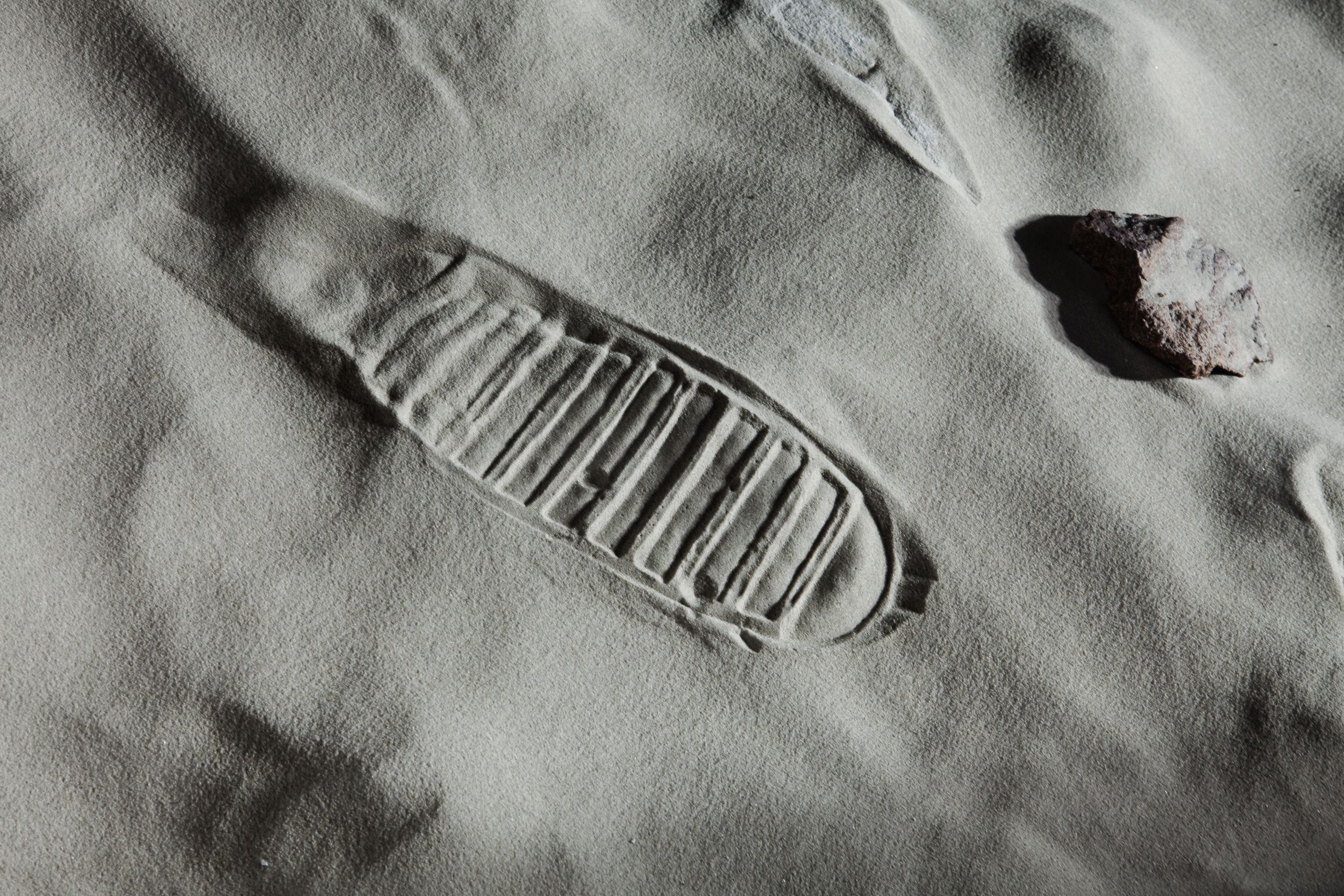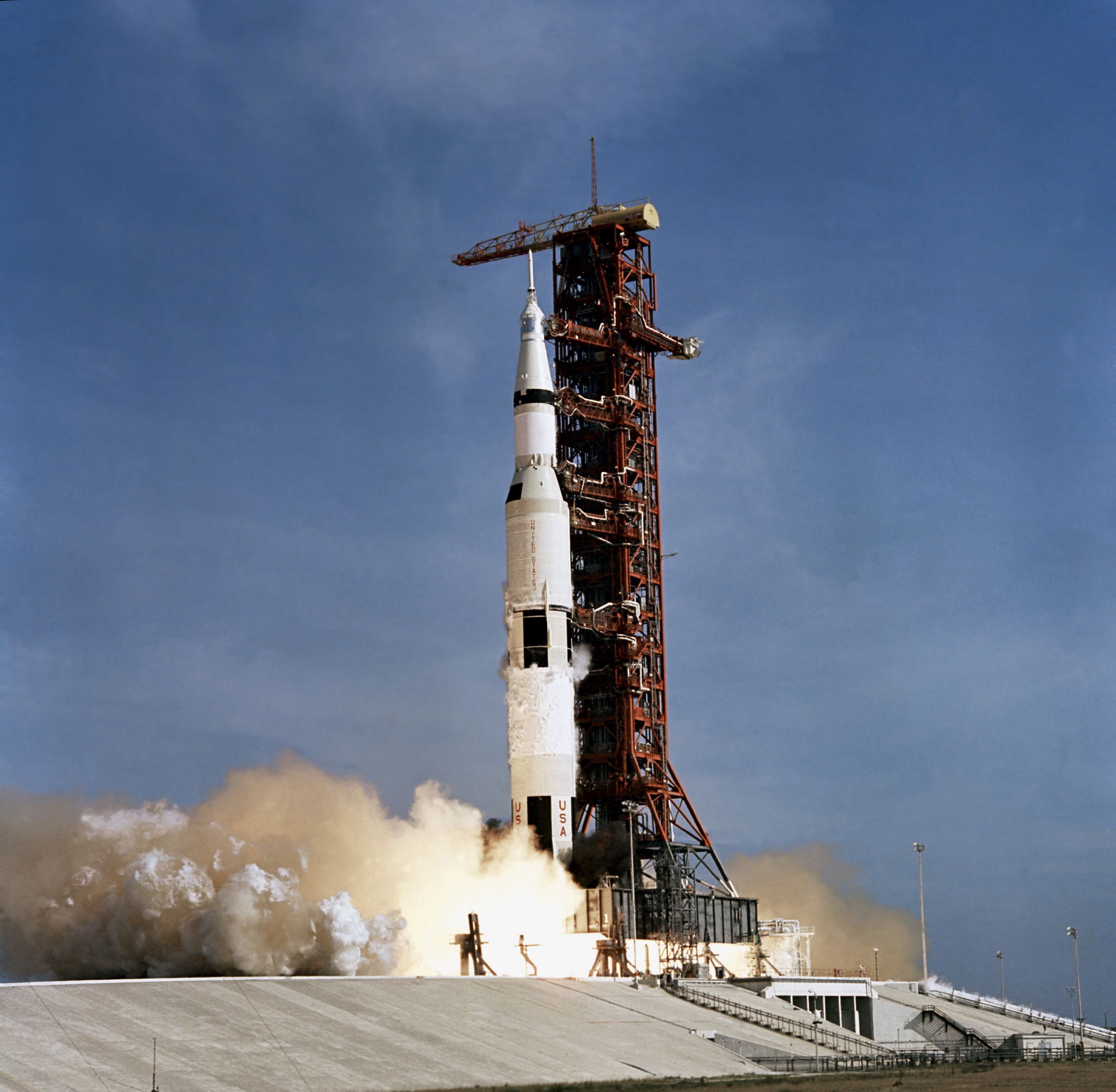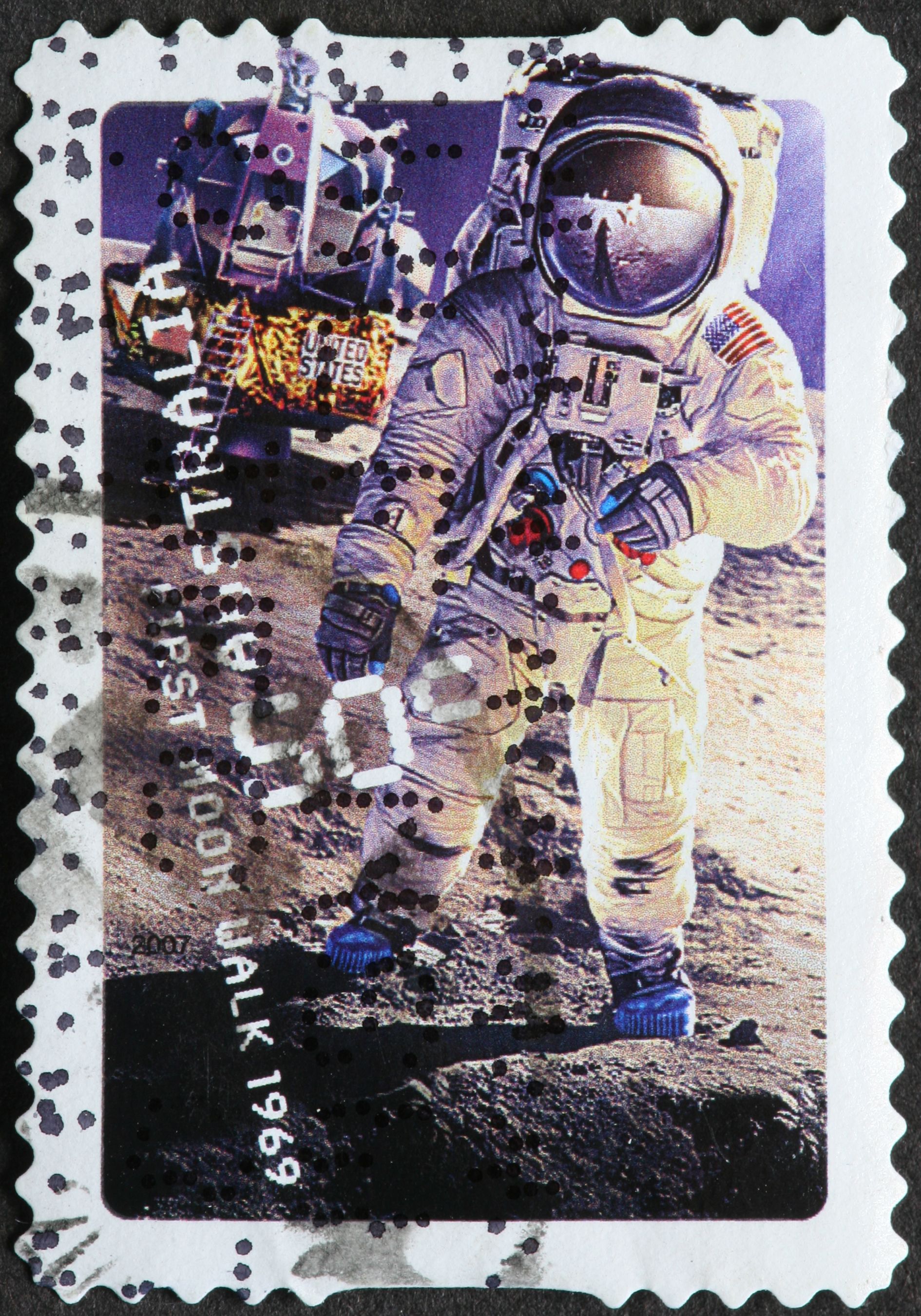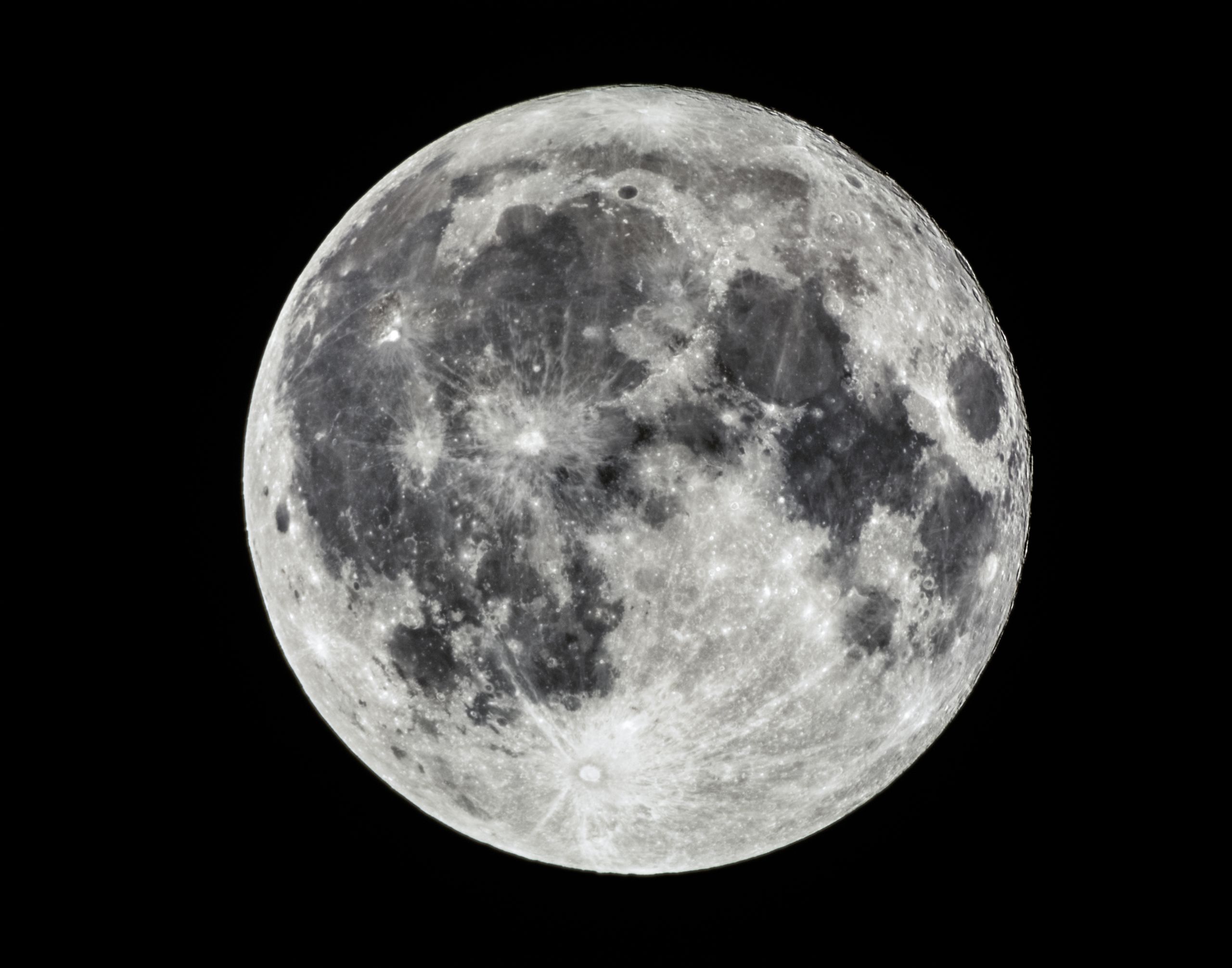Tension and Tranquillity
In the shoes of a UQ student for the 1969 moon landing - as told 50 years on

Where would you have rather been on the day that humankind first landed on the moon than sitting in class at UQ?
Former Bachelor of Science student Dr Bill Booth was certainly a diligent scholar – as his memories of 21 July, 1969 attest.
“Although Apollo 11 is in the history books as landing on 20 July, which was a Sunday night in America, in Brisbane it was 10:17am on a Monday morning,” Dr Booth recounts.
“I was doing second-year biochemistry that day and we went to the small lecture theatre in the John Hines Building on Circular Drive and spent much of the day there watching the broadcast of the landing.

The 363-feet tall Apollo 11 space vehicle is launched from Cape Canaveral, Florida.
“The television was quite small – as they tended to be back then – and the black-and-white image was quite grainy.
“The sound wasn’t much better either.”
Despite the rather rudimentary technology, the student body made do with what was available.
“The TV was positioned up high on the front wall of the theatre and the windows were curtained,” says Dr Booth.
“Initially the room was empty, but it started to fill as the morning wore on.
“Word got out that the TV was on and the class was showing the landing.”

The 363-feet tall Apollo 11 space vehicle is launched from Cape Canaveral, Florida.
The 363-feet tall Apollo 11 space vehicle is launched from Cape Canaveral, Florida.

An Australian postage stamp celebrates the moon landing.
An Australian postage stamp celebrates the moon landing.
Of course, the importance of the landing in the context of the time added extra gravity to the situation.
Not only was this a feat of engineering, exploratory and scientific importance, it came at a time when new political forces across the globe were jostling for ascendancy.

An Australian postage stamp celebrates the moon landing.
“As a generation growing up in the 1960s we heard the audacious claims of President John F Kennedy that America would put a man on the moon before the end of the decade,” Dr Booth says.
“The rivalry between the two space superpowers, America and Russia, provided an ongoing commentary in the news.
“We, as the rest of the world, were amazed to see each new Apollo mission launch.
“The final landing was the fulfilment of years of built-up anticipation.”
Each step of the way, as NASA negotiated the dangers of the unprecedented journey, students held their collective breath.
“The sight of the rockets lifting off from Cape Canaveral in a cloud of raw power and then disappearing into the sky as a vapour phase was always spellbinding viewing,” Dr Booth says.
“The fact the moon landing site was named the Sea of Tranquillity added a romantic, if not ethereal, dimension to the whole event.”
“The name rolled off the tongue as if to inspire world peace when, at the time, closer to home, the Vietnam war raged.”
While it’s easy to take a romanticised view of the moon landing in retrospect, Dr Booth reminds us there was incredible tension as the lives of the astronauts, and dreams of the public, hung in the balance.
The unknown held immense and untold danger.
And it was drawn out over an agonisingly slow timeline.
“We sat there apprehensively as the lunar module landed, creating a puff of dust as the base touched down,” recalls Dr Booth.
“There was a lot of speculation then as to how solid the moon surface was, and some expected the landing module to sink into the surface.
“The astronauts Neil Armstrong and Buzz Aldrin, with their visors brightly reflecting the moonscape around them, did not descend until six hours later.
“It was a long day waiting for that first step on the moon and must have been dark when we emerged to go home.”
Having moved south after his UQ days, Dr Booth is these days a laboratory operations manager at the University of Technology, Sydney (UTS).

Share your memories or join the conversation
Your comments here are governed by Facebook Terms of Service and UQ Social Media Terms of Use.


